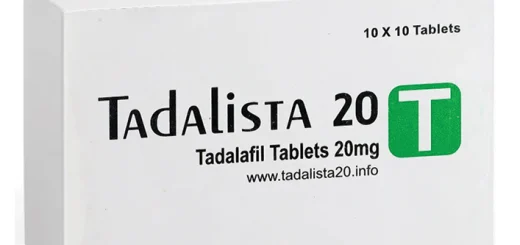Structural Heart Disease: Symptoms, Causes, and Treatment

Your heart is like a complicated structure. While a building’s rooms and corridors keep its residents secure, those within your heart maintain your blood moving in and out properly — all to preserve your health and well-being.
Like a structure, structural defects can cause problems in the future, especially if they are not properly repaired and cared for.
Let’s understand what is structural heart disease!!
What is Structural Heart Disease
Structural heart disease is a form of heart disease that refers to the defect within your heart that you were either born with or have developed with aging, injury, or infection. Similar to other kind of heart diseases, it can lead to health problems if left untreated.
It actually has nothing to do with eating, exercising, smoking, or any other lifestyle choices.
There are many types of structural heart disease
One of the most common structural heart diseases is valvular heart disease, which is when a heart valve is damaged or doesn’t work properly. There are many other types too where a baby is born with a hole in the heart too which is called an atrial septal defect.
The role of your heart is undeniably critical. By pumping blood throughout your body, your cells are able to get the blood, oxygen, and nutrients they need to survive.
This vital organ is made up of two major components — chambers and valves. The chambers are like rooms within your heart, while the valves are similar to doors that separate those rooms.
If you eat well and exercise regularly, you are helping to prevent coronary heart disease, which is caused by plaque buildup in the arteries and can cause chest pain and even a heart attack. A different issue is structural heart disease. It’s a phrase used to describe flaws or disorders in the heart’s structure, such as its valves.
A structural heart defect can be congenital, meaning it was there at birth, or it can be the result of age or underlying disorders that cause wear and tear on the heart later in life.
The good news is that structural heart disease treatments are improving. While open heart surgery is still the best option in some circumstances, minimally invasive catheter-based therapies have made care more comfortable for patients, with fewer complications and faster recoveries.
Today, most people with severe structural heart disease can be effectively treated and go on to live a normal life.
Let us examine the warning signs of structural heart disease……
Here are a few signals that your heart is defective from birth! There might be times when you can suffer from structural heart disease but one cannot make out.
Symptoms of structural heart disease
So as and when the disease progresses, the symptoms might include:
- Chest pain, tightness, or pressure
- Dizziness, lightheadedness, or fainting
- Fatigue
- High blood pressure
- Irregular heartbeats
- Kidney dysfunction
- Shortness of breath
- Swelling in the abdomen, ankle, and feet.
Is there any specific hardcore reason why our hearts might face structural abnormalities?
So now……
This is something very interesting to be discussed!!
It is not always a mandated thing that your lifestyle can drop you to the gates of any kind of disease.. Yes, of course, your daily lifestyle is always and mostly to be blamed when you are ultimately suffering from any kind of disease.
But….. always it cannot be the same!
Sometimes genetics can also be the reason for all the mess!
There might be some abnormalities in the DNA or any genetics.
Causes of Structural Heart Disease
Structural heart disease can also occur later in the stage.
- Aging might lead to calcium deposits on your heart valves.
- Addiction to alcohol or drugs.
- Aneurysm of the aorta.
- Lupus and rheumatic fever are examples of autoimmune diseases.
- Cardiovascular disease (myocardial infarction) is a type of heart attack.
- Heart diseases such as amyloidosis, hemochromatosis, and sarcoidosis.
- Endocarditis.
- Diabetes and thyroid illness are examples of endocrine diseases.
- Hypertension (high blood pressure).
- Excessive radiation exposure.
- Marfan syndrome is a genetic disorder.
- Muscular diseases, such as muscular dystrophy.
- Atherosclerosis is the accumulation of plaque in the arteries.
Treatment for structural heart disease
There may be a condition in which structural flaws do not require any medication or treatment, but they must be closely checked!
Some patients may also benefit from the therapy! For example, if blood clots represent a concern to the patients, a doctor may prescribe warfarin, a common blood thinning medicine. Some types of structural heart disease won’t need treatment. But a provider will need to monitor your condition throughout your lifetime.

Your provider may treat other types of structural heart disease with:
- Medications.
- Minimally invasive heart procedures, which use only small incisions to repair or replace a defective valve.
- Open-heart surgery, where a surgeon opens your chest wall to access your heart for valve replacements or a heart transplant.
You can connect with your medical professional and ask whether you can Buy VILAFINIL 200MG
Structural abnormalities can affect the heart’s valves, chambers, chamber walls, muscles, and major arteries.
The heart has four chambers and four heart valves (the aortic, mitral, tricuspid, and pulmonary valves). They must open and close in harmony for blood to flow in the proper direction. When a structural abnormality affects the functioning of one of the heart’s valves, it is called heart valve disease.
There are two common types of structural defects that affect heart valves:
Regurgitation or “leaky” valve. Some structural abnormalities can interfere with a valve’s ability to completely close. In these cases, blood regurgitate, or leak, back into one of the heart’s chambers.
Stenosis– This refers to the narrowing of one of the heart’s valves, making it more difficult for blood to flow through it. This can reduce the amount of blood that is pumped to organs and tissue around the body.
Other common types of structural heart disease include:
Septal defects – The heart’s chambers are separated from one another by septa or walls. A septal defect is one in which there is a hole in one of these walls. When a hole is present between the two upper chambers (the atria), it may be due to an atrial septal defect (ASD), or another birth defect called a patent foramen ovale. When there is a hole in the wall between the two lower chambers (the ventricles), it is known as a ventricular septal defect (VSD).
Coarctation of the aorta – The aorta—the largest artery in the body—delivers oxygen-rich blood from the heart to the body’s organs and tissues. Coarctation of the aorta is a birth defect in which the aorta is narrowed, which reduces the amount of blood that reaches organs and tissues.
Hypertrophic obstructive cardiomyopathy– In this condition, the heart muscle becomes thicker than usual, which can result in a reduction in the amount of blood that is pumped throughout the body.
Conclusion:
Structural heart diseases are unique because they predominantly affect younger populations and thus contribute substantially to the years of life lost from cardiovascular disease in LMICs. Preventive measures exist for all three conditions, and they are most effective for RHD and CD. Interest is growing in screening programs for structural heart diseases, yet the role of screening is limited in settings where access to advanced medical and surgical care is not available. Most individuals with advanced structural heart disease require surgery, which poses particular challenges in limited-resource settings and provides additional rationale for scaling up cost-effective primary prevention efforts.
Our discussion of these three conditions provides decision-makers with a framework for public policy that takes into consideration the resources available in various settings. Our recommendations for prevention and management will need to be contextualized to individual settings and integrated into broader cardiovascular disease control policy frameworks.








